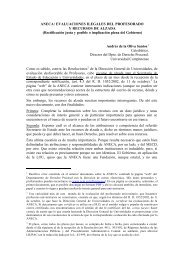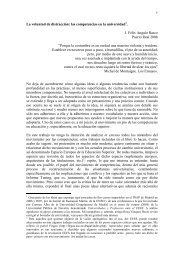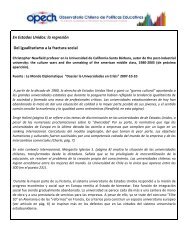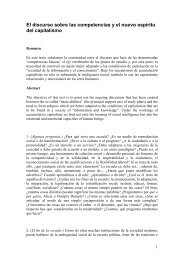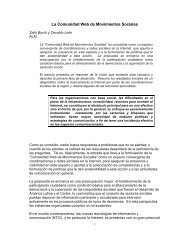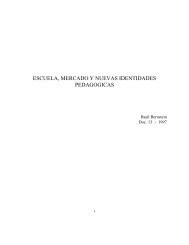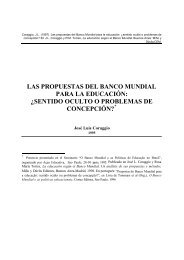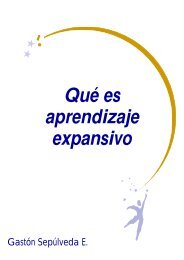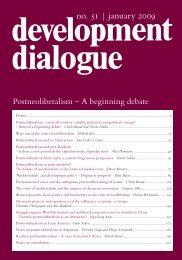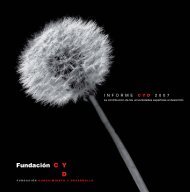Lifting the Burden: Law Student Debt as a Barrier to Public Service
Lifting the Burden: Law Student Debt as a Barrier to Public Service
Lifting the Burden: Law Student Debt as a Barrier to Public Service
Create successful ePaper yourself
Turn your PDF publications into a flip-book with our unique Google optimized e-Paper software.
38The maximum repayment period is 25 years. 64 After 25 years, <strong>the</strong> Secretary forgivesany remaining debt. 65 Anytime after electing <strong>the</strong> income-contingent repaymen<strong>to</strong>ption, a borrower may prepay <strong>the</strong> debt without penalty or switch <strong>to</strong> a more rapidrepayment plan.For married borrowers, <strong>the</strong> income-contingent repayment option formula combines<strong>the</strong> income of both spouses for purposes of determining <strong>the</strong> monthly repaymen<strong>to</strong>bligation. 66 By combining <strong>the</strong> income of both spouses, <strong>the</strong> program effectivelyimposes a “marriage penalty” for married two-income, one-debt couples, compared <strong>to</strong><strong>the</strong> repayment obligation for two borrowers who are not married. 67To date, <strong>the</strong> program h<strong>as</strong> not served <strong>the</strong> original purpose for which it w<strong>as</strong> created – <strong>to</strong>encourage and enable graduates <strong>to</strong> take lower-paying community service jobs. Graduatesshy away from <strong>the</strong> program because of <strong>the</strong> long period, 25 years, before forgiveness occurs.RECOMMENDATIONSThe Commission offers <strong>the</strong> recommendations outlined below <strong>as</strong> a comprehensivepackage designed <strong>to</strong> provide relief for and incentives <strong>to</strong> lawyers who want <strong>to</strong> serve <strong>the</strong>ircommunities through public service. In order <strong>to</strong> effectuate meaningful change and relief,<strong>the</strong> Commission urges Congress and/or <strong>the</strong> Administration <strong>to</strong> implement <strong>the</strong> recommendationsso that law graduates can accept and remain in lower-paying public service jobs.FederalCongress should enact legislation or <strong>the</strong> Secretary of <strong>the</strong> U.S. Department ofEducation should amend existing regulations governing <strong>the</strong> income-contingentrepayment option of <strong>the</strong> William D. Ford Federal Direct Loan Program by (1)permitting forgiveness sooner than 25 years after a borrower begins repayingloans and (2) eliminating or reducing <strong>the</strong> marriage penalty.The income-contingent repayment option of <strong>the</strong> William D. Ford Federal DirectLoan Program is available <strong>to</strong> all borrowers, including law graduates, with federaldirect loans. It also includes borrowers who consolidate <strong>the</strong>ir federally guaranteedloans in<strong>to</strong> federal consolidation loans. Congress created <strong>the</strong> income-contingentrepayment option <strong>to</strong> enable graduates with high debt <strong>to</strong> pursue careers in <strong>the</strong> traditionallylow-paying fields of public interest or community service.Although <strong>the</strong> income-contingent repayment option w<strong>as</strong> designed <strong>to</strong> enable graduates<strong>to</strong> pursue public service careers, very few law graduates use it. 68 A survey of lawstudents identified <strong>the</strong> <strong>to</strong>p three re<strong>as</strong>ons that most students do not elect incomecontingentrepayment option <strong>as</strong>: (1) an unwillingness <strong>to</strong> commit <strong>to</strong> a 25-year repaymentterm, even though <strong>the</strong> program is revocable; (2) <strong>the</strong> difficulty of long-term planningunder conditions of uncertainty; and (3) <strong>the</strong> prevalence of high private debts not coveredby <strong>the</strong> income-contingent repayment option. 69 When respondents were <strong>as</strong>ked if <strong>the</strong>y6434 C.F.R. § 685.209 (4) (i). Congress set a 25-year maximum before loans payable under <strong>the</strong> income-contingentrepayment could be forgiven, but did not set a minimum. In 1994, <strong>the</strong> Department of Education set <strong>the</strong> 25-year maximum <strong>as</strong> <strong>the</strong> minimum. The Department could amend this regulation <strong>to</strong> permit forgiveness sooner,<strong>to</strong> make <strong>the</strong> program more attractive <strong>to</strong> borrowers. Even though fewer than 1% of borrowers elect <strong>the</strong> incomecontingentrepayment option, <strong>the</strong> Department h<strong>as</strong> not amended <strong>the</strong> regulation.6534 C.F.R. § 685.209 (4) (iv). The amount of debt forgiven is treated <strong>as</strong> taxable income.66See, 34 C.F.R. § 685.209 (b).67See generally, Schrag, The Federal Income-Contingent Repayment Option for <strong>Law</strong> <strong>Student</strong> Loans, supra note 61,pp. 827-830.68Schrag states: “[P]olicymakers originally anticipated ICR would be used by 15-30% of borrowers. TheSecretary of Education projected that between 1996-2000, 17% of all direct loans…would be repaid under<strong>the</strong> income-contingent repayment option. In fact, fewer than 1% of new borrowers at schools that offerfederal direct loans choose income-contingent repayment.” Id. at 830-831.69Id. at 788-793.



